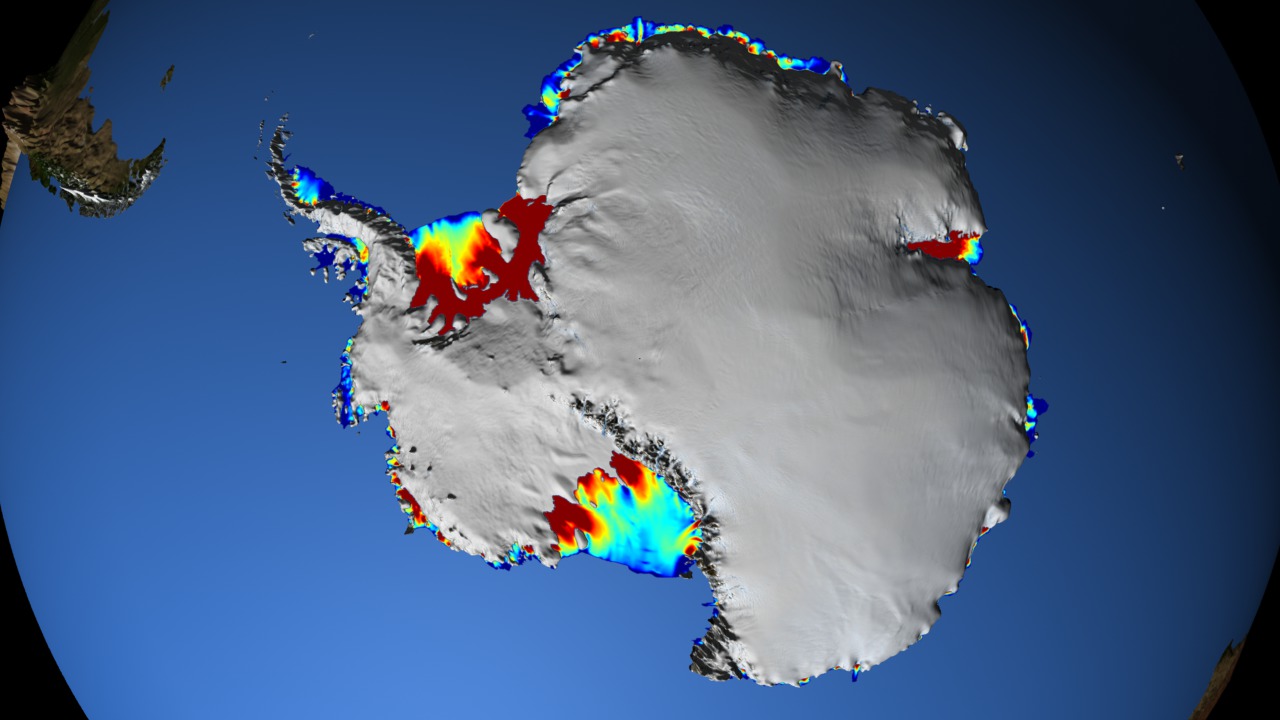Currents Of Change
Warm ocean currents circulating off the coast of Antarctica are indirectly contributing to rising global sea levels. As these twisting flows meander around the continent's frozen edges and beneath the underside of floating ice shelves, they're slowly melting the ice from below. Using surface elevation measurements collected during NASA's ICESat mission, scientists have found that this melting is driving most of Antarctica's recent ice losses—particularly in West Antarctica, where inland glaciers that feed into the ice shelves are draining ice into the ocean at an accelerated rate. The visualization below shows the interaction of modeled ocean currents and Antarctic ice shelves, where red areas represent ice thicker than about 1,800 feet and blue areas represent ice thinner than about 650 feet. Notice how the ice shelves generally become thinner—a rainbow of colors indicates intermediate thicknesses—as they extend farther from land.

When it comes to ice in Antarctica, out of sight is not out of mind.
Terrain is exaggerated by a factor of 50 to better differentiate the relatively flat ice shelves from the rest of the ice sheet.

The massive Ross Ice Shelf is relatively stable compared to other ice shelves in West Antarctica.

Warm ocean currents have spurred the rapid thinning of the Pine Island Glacier and Getz ice shelves.

The Getz Ice Shelf stands 200 feet above the ocean surface and, in places, lies more than 1,000 feet below.

Warm air, not ocean currents, drives the melting of ice shelves located along the Antarctic Peninsula.
For More Information
See NASA.gov
Credits
Please give credit for this item to:
NASA's Goddard Space Flight Center
-
Animators
- Trent L. Schindler (USRA)
- Horace Mitchell (NASA/GSFC)
- Greg Shirah (NASA/GSFC)
-
Producer
- Patrick Lynch (Wyle Information Systems)
-
Writer
- Kathryn Hansen (Wyle Information Systems)
Release date
This page was originally published on Thursday, May 3, 2012.
This page was last updated on Wednesday, May 3, 2023 at 1:53 PM EDT.
